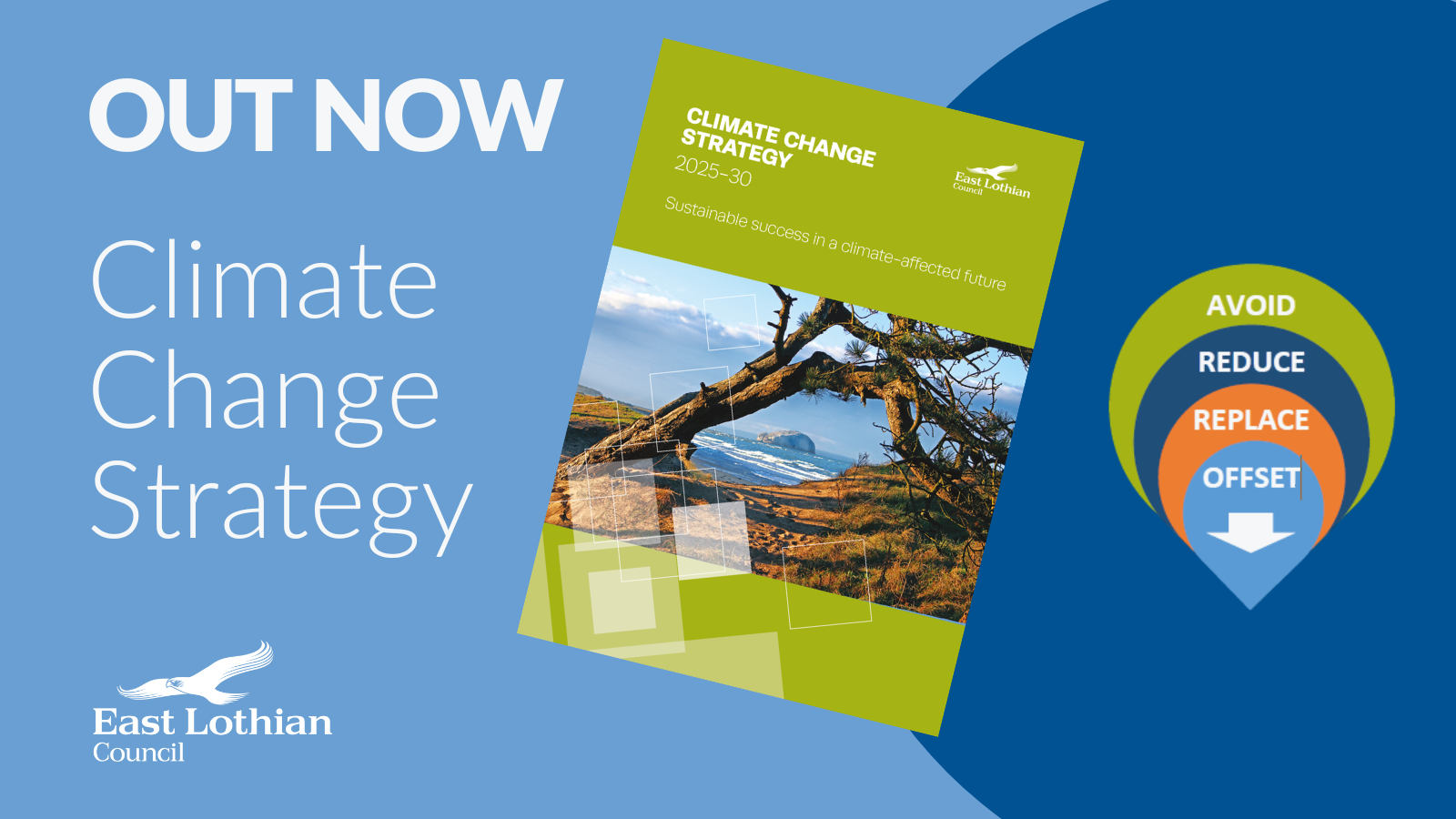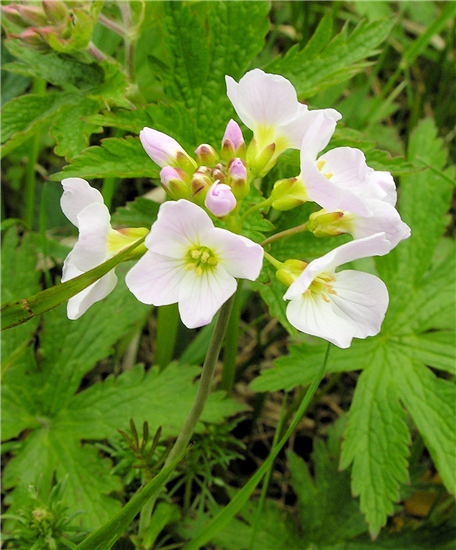Strategy to tackle county climate change approved

The East Lothian Council Climate Change Strategy 2025-2030 has been adopted following a meeting of full council on Tuesday (28 April).
The strategy is divided into four themes - Governance, Assets, Services, and Place - which broadly describe how we will become more climate-positive. These themes are further arranged into 17 focus areas which set out approaches to become climate ready and help achieve net zero emissions by 2045.
Under the strategy, our organisation will seek to avoid activities which create greenhouse emissions, strive to reduce emissions where the activity is needed, and replace emissions-intensive activities with low or no-emission alternatives where possible.
We will seek to ensure its buildings and vehicles are lower emission, services are planned to be lower impact and resilient to climate-induced disruption and, through partnership working, both nature and the built environment are enhanced to tackle the climate crisis.
East Lothian Council declared a climate emergency in 2019, and the first five-year strategy was published in 2020. Over the course of the 2020-25 strategy, our direct and indirect greenhouse gas emissions (plus transmission losses from electricity) were reduced by about 20 per cent.
A public consultation to collect feedback on the new strategy was carried out last year. Nearly 100 individuals and organisations responded, including the East Lothian Climate Action Network which represents more than 80 groups. In January consultations with children took place with over 250 learners across 15 classrooms answering a survey.
A Ranger writes
Countryside Ranger Richard English shares his knowledge of cuckoos and the cuckoo flower.
May is often the month in which it feels like things are finally settling down weather-wise. It’s a chance to get away from April’s unpredictability and get set up for the approaching summer. That means there’ll probably be three feet of snow…
We should at least be able to see some of our native wildflowers starting to bloom and one of these is the cuckoo flower. It’s a delicate plant found in damp or wet habitats, such as pond margins, marshes and bogs. It was given the name because it flowers at the same time that the cuckoo starts to call. It has the characteristic four-petalled flower of the cabbage family – plants in this family are known as crucifers, as their petals make a cross shape (sort of). In the case of the cuckoo flower the petals are a pale pink, or sometimes white, which can make them stand out in amongst the surrounding greenery.
 Cuckoo flower
Cuckoo flower
Like many members of the cabbage family, the leaves form an important caterpillar food plant – particularly for orange-tip and green-veined white butterflies. The flowers provide valuable nectar for early-flying bees and butterflies. The plant is also very attractive to froghoppers – small insects that feed on sap. It is the larvae of these that produce the frothy blobs known as “cuckoo spit.”
People used to believe that if the cuckoo flower was picked and brought inside, the house would be struck by lightning. It was also thought that if eaten it would restore lost appetite and aid digestion. In the past it was also used as a substitute for watercress – another member of the crucifer family, with superficially similar leaves.
Cuckoos generally return from their wintering grounds in April but should be calling throughout May. That’s, of course, if you’re lucky enough to hear one at all. The UK population has declined significantly in recent decades, although numbers in Scotland have, happily, bucked this trend and actually increased.
 Cuckoo - credit: Walter Baxter (geograph.org.uk)
Cuckoo - credit: Walter Baxter (geograph.org.uk)
Cuckoos do not make a nest, but instead they indulge in a spot of “brood parasitism.” This involves the female finding a nest of another species and removing an egg, replacing it with one of her own. It hatches quickly and the young cuckoo pushes the remaining eggs from the nest, leaving its duped foster parents to bring it up alone. Popular victims are meadow pipits, dunnocks and reed warblers. There is evidence of these hosts rejecting cuckoo eggs, to the extent of abandoning the nest altogether. However, it appears that once the young cuckoos hatch, the parental instinct is so strong that the host will continue to feed the interloper, despite it being way too big and the wrong colour.
Adult cuckoos are similar in appearance to sparrowhawks, especially in flight. This may help them in their chosen breeding strategy. Their raptor-like appearance spooks other birds, making them abandon their nests temporarily. This allows the cuckoo the opportunity to sneak in and lay its own egg without too much fuss. Very cunning, indeed.
Get pedalling with Cycling UK!


Cycling UK is teaming up with East Lothian Council to offer free cycling lessons, activities, and bike loans to residents across the county. Whether you're a complete beginner or looking to boost your confidence, they have something for everyone.
Adult cycle training
Cycling UK East Lothian provides personalised 1:1 or small group sessions tailored to your skill level. For those who have never cycled or haven't cycled in years, sessions are held in local parks and playgrounds to help you find your balance and start pedalling. If you're comfortable cycling but hesitant about road cycling, they offer training on control, observations, positioning, priorities, and signalling on quiet roads, gradually building up to busier routes. They can also assist with route planning and commuting by bike, ensuring you choose the safest paths.
Bike try-outs and loans
Cycling UK offers short and long-term loans of bikes or e-bikes, along with accessories like locks, lights, and panniers, all free of charge. The Cycling UK Development Officer in East Lothian can help you select the best bike for your needs, whether it's a step-through frame, a bike with pannier racks, or a folding bike for easy storage. They cater to individual needs, including options for those with balance issues or disabilities, such as three-wheeled bikes on Trike Tuesdays in Musselburgh or tandem rides with In Tandem East Lothian.
Family rides
Confident on your bike? Cycling UK can help you cycle with your children for everyday journeys, providing child-seats, trailers, or follow-me-tandems. They also offer guidance on safely managing your children while cycling on quiet roads and shared paths.

Email Cycling UK Development Officer, Angie Kinghorn (angie.kinghorn@cyclinguk.org), to get started on your cycling journey!